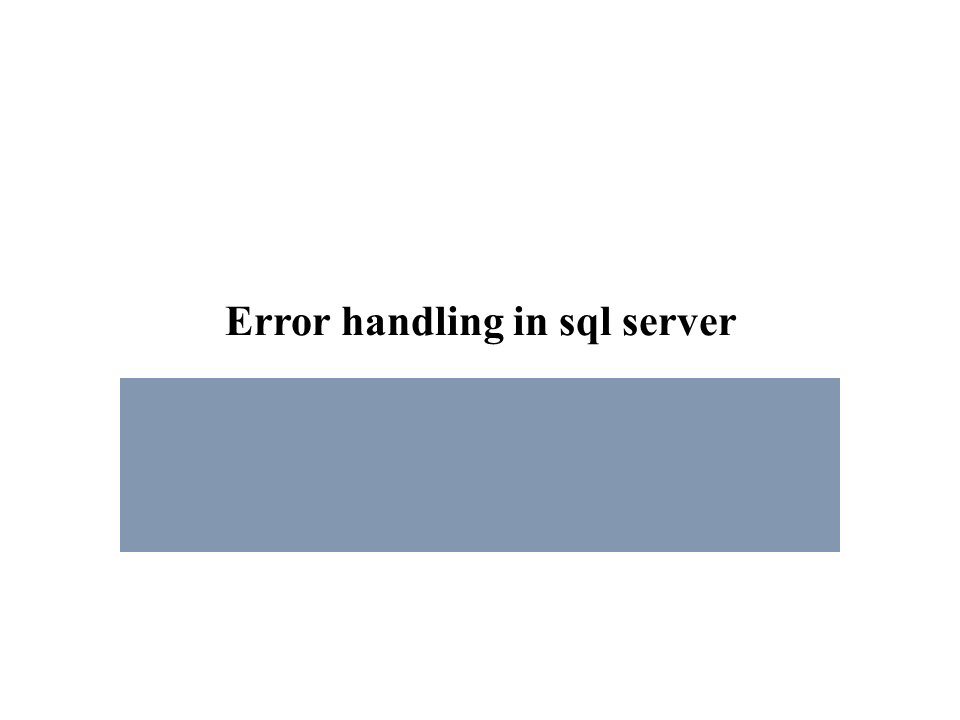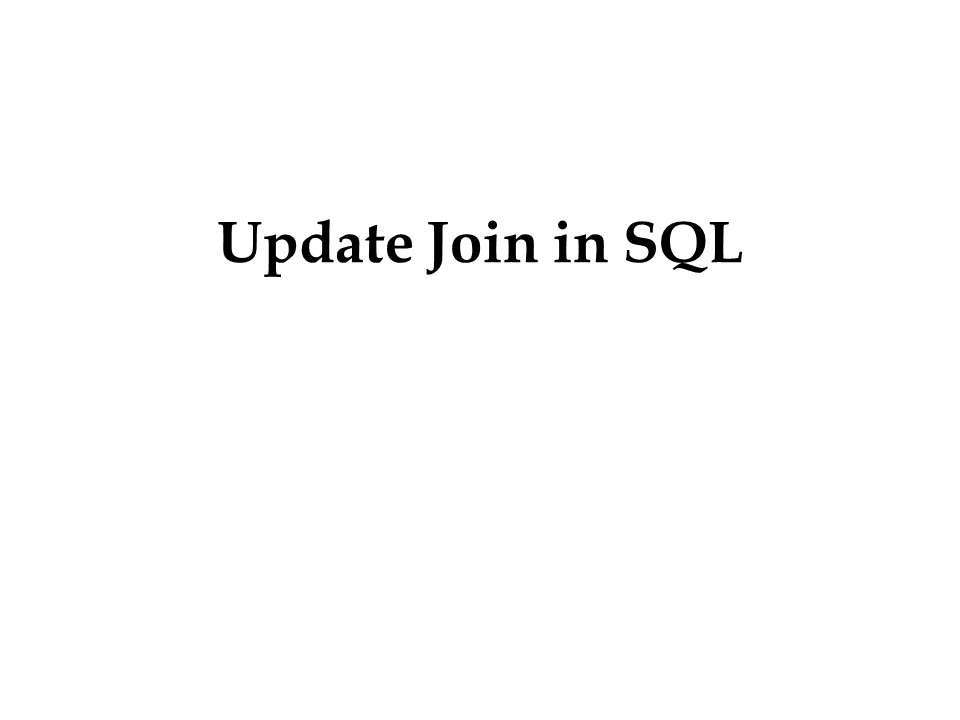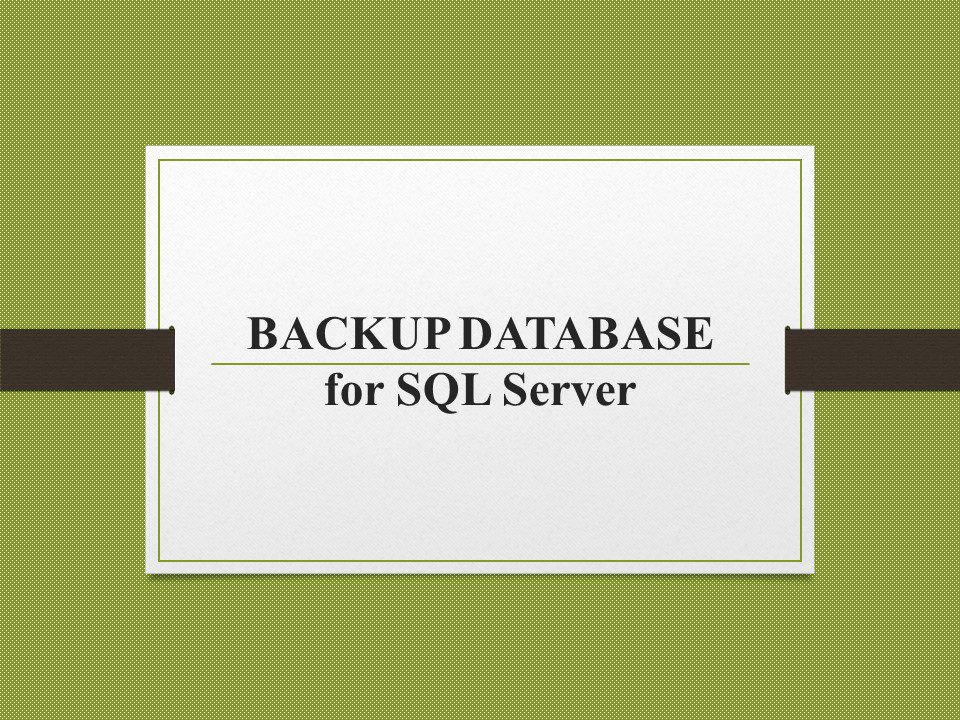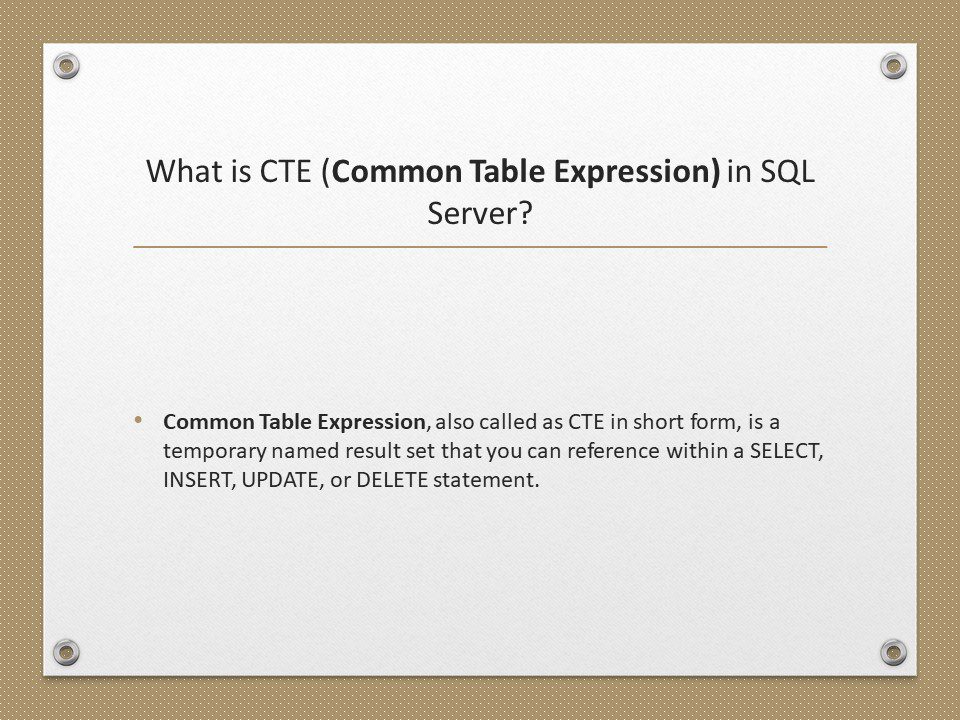Error handling in sql server
Syntax:
BEGIN TRY
{ Any set of SQL statements }
END TRY
BEGIN CATCH
[ Optional: Any set of SQL statements ]
END CATCH
[Optional: Any other SQL Statements]
Error handling in sql server Syntax:
In procedure spSellProduct, Begin Transaction and Commit Transaction statements are wrapped between Begin Try and End Try block. If there are no errors in the code that is enclosed in the TRY block, then COMMIT TRANSACTION gets executed and the changes are made permanent. On the other hand, if there is an error, then the control immediately jumps to the CATCH block. In the CATCH block, we are rolling the transaction back. So, it’s much easier to handle errors with Try/Catch construct than with @@Error system function.
Create Procedure spSellProduct
@ProductId int,
@QuantityToSell int
as
Begin
-- Check the stock available, for the product we want to sell
Declare @StockAvailable int
Select @StockAvailable = QtyAvailable
from tblProduct where ProductId = @ProductId
-- Throw an error to the calling application, if enough stock is not available
if(@StockAvailable < @QuantityToSell)
Begin
Raiserror('Not enough stock available',16,1)
End
-- If enough stock available
Else
Begin
Begin Try
Begin Transaction
-- First reduce the quantity available
Update tblProduct set QtyAvailable = (QtyAvailable - @QuantityToSell)
where ProductId = @ProductId
Declare @MaxProductSalesId int
-- Calculate MAX ProductSalesId
Select @MaxProductSalesId = Case When
MAX(ProductSalesId) IS NULL
Then 0 else MAX(ProductSalesId) end
from tblProductSales
--Increment @MaxProductSalesId by 1, so we don't get a primary key violation
Set @MaxProductSalesId = @MaxProductSalesId + 1
Insert into tblProductSales values(@MaxProductSalesId, @ProductId, @QuantityToSell)
Commit Transaction
End Try
Begin Catch
Rollback Transaction
Select
ERROR_NUMBER() as ErrorNumber,
ERROR_MESSAGE() as ErrorMessage,
ERROR_PROCEDURE() as ErrorProcedure,
ERROR_STATE() as ErrorState,
ERROR_SEVERITY() as ErrorSeverity,
ERROR_LINE() as ErrorLine
End Catch
End
End






